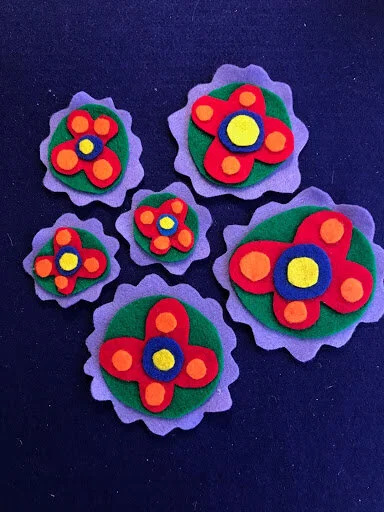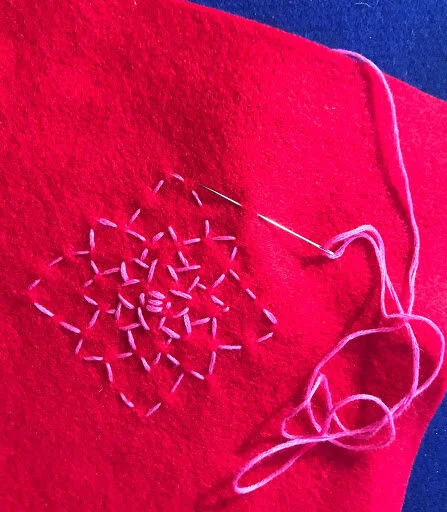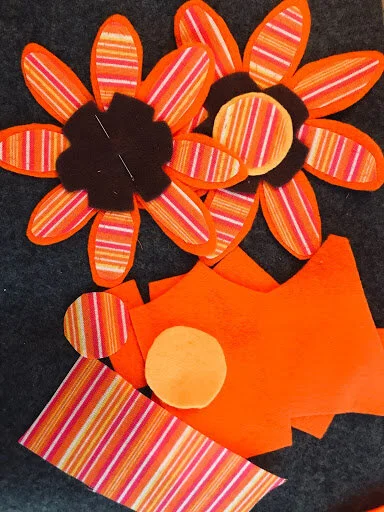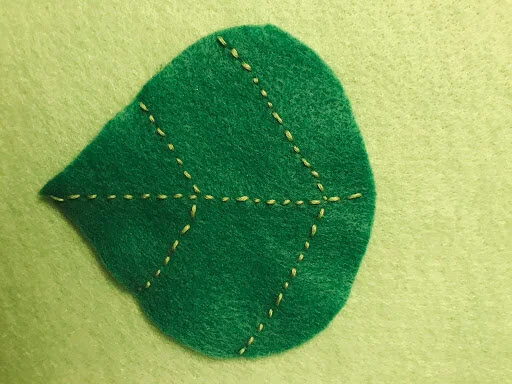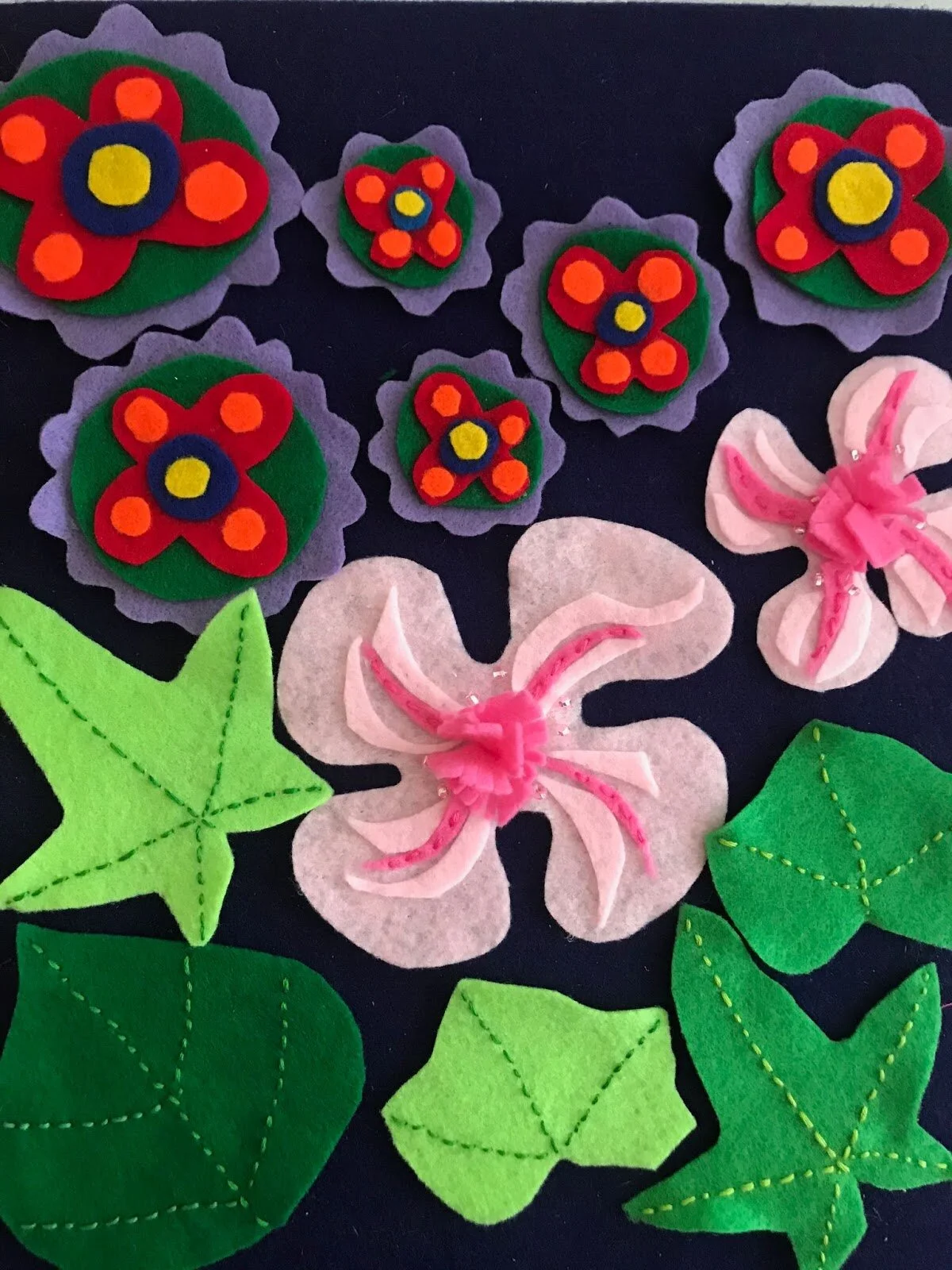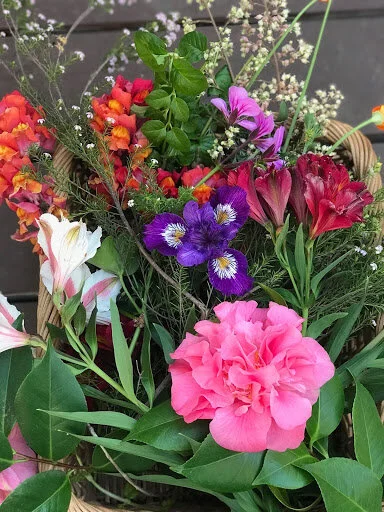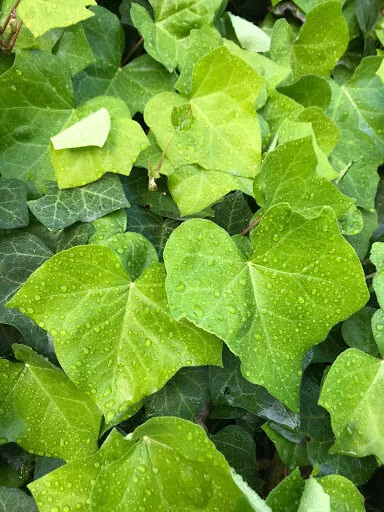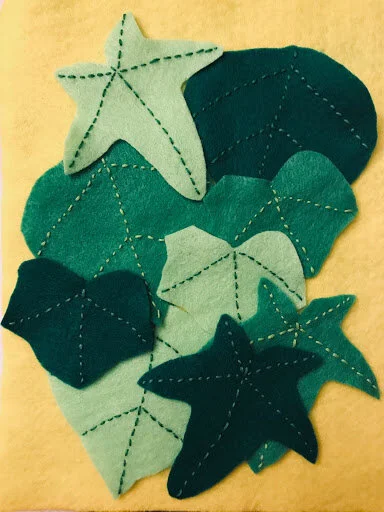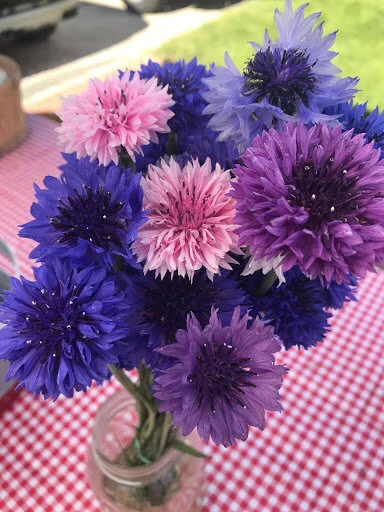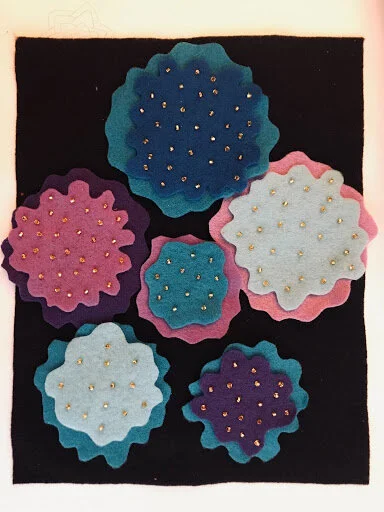Bereshit: A Felt Creation Story / Jane Simon
Background
How might I use felt as a medium to make Jewish stories come alive and activate our oral tradition of midrash? A parallel side project that I am creating responds to the question: How might I renew and amplify the tradition of counting the Omer by creating Omer calendars to give as gifts?
I am thinking about the oral tradition by which our folktales and sacred stories and midrash are created and passed down through the generations. I believe that these narratives and the lineage from which they spring are treasured gifts. I want to offer this gift and encourage others to tell their own stories and add them to our chain of tradition.
I am making a set of felt images that can be used and combined in different ways (think “loose parts”). My focus now is Bereshit from Genesis. I want to create images for more Torah stories and folk tales as my work evolves.
I hope that my work brings pleasure to people and provides a portal for them to become deeply engaged and inspired by our Jewish tradition of narrative and storytelling. I hope to create opportunities for children to create their own imagery through which to tell their stories.
Process
During the pandemic I started taking a daily morning walk. Over the course of my walks I noticed the infinite variety, symmetry and exquisite engineering and construction of the plants and flowers on my route. They were never static. The moment of the season, light and temperature of each day and the particular plant's arc of life were fully present. The days passed. I walked the same path. I noticed with greater specificity, curiosity and awe. Seed, petal, stem, bud , blossom, leaf - nourished by magic dirt. The mystery and hand of creation revealed.
God made man because He loves stories.
Eli Wiesel
When God began to create heaven and earth -- the earth being unformed and void, with darkness over the surface of the deep and a wind from God sweeping over the water—God said, “Let there be light”; and there was light.
Genesis 1:1-3
And God said, "Let the earth sprout vegetation, seed yielding herbs and fruit trees producing fruit according to its kind in which its seed is found, on the earth," and it was so.
And the earth gave forth vegetation, seed yielding herbs according to its kind, and trees producing fruit, in which its seed is found, according to its kind, and God saw that it was good.
Genesis 1:11-12
משֶׁה קִבֵּל תּוֹרָה מִסִּינַי, וּמְסָרָהּ לִיהוֹשֻׁעַ, וִיהוֹשֻׁעַ לִזְקֵנִים, וּזְקֵנִים לִנְבִיאִים, וּנְבִיאִים מְסָרוּהָ לְאַנְשֵׁי כְנֶסֶת הַגְּדוֹלָה. הֵם אָמְרוּ שְׁלשָׁה דְבָרִים, הֱווּ מְתוּנִים בַּדִּין, וְהַעֲמִידוּ תַלְמִידִים הַרְבֵּה, וַעֲשׂוּ סְיָג לַתּוֹרָה:
Moses received the Torah at Sinai and transmitted it to Joshua, Joshua to the elders, and the elders to the prophets, and the prophets to the Men of the Great Assembly. They said three things: Be patient in [the administration of] justice, raise many disciples and make a fence round the Torah.
Pirke Avot 1:11
Every single word is an entire world. When a person stands up to pray and recites the words of the prayers, he is gathering beautiful buds and flowers and blossoms, like someone walking in a field picking lovely blossoms and flowers one at a time, until he makes a bouquet. After that he picks more, one by one, making another bouquet, and joins them together. So he goes on, picking and gathering more and more lovely bouquets.
Flower text, Reb Nachman, Likutei Mohoran 65:2
Invitation for Interaction
My Project was conceived of as interactional and dynamic.Young children are the first audience I have in mind. Dimensions of the felt board/storytelling experience that I imagine could include:
- Offering open ended questions, prompts and materials for children to create their own images using the rich and diverse iconography found in the Creation Story, Jewish folktales, and narratives.
-Providing opportunities for the children to interact with the materials: touching, exploring and moving the felt pieces on the felt board.
- Inviting the children to take on the role of storyteller as they establish ownership, creating and sharing individual and collaborative midrash - new stories that are catalyzed by foundational texts.

